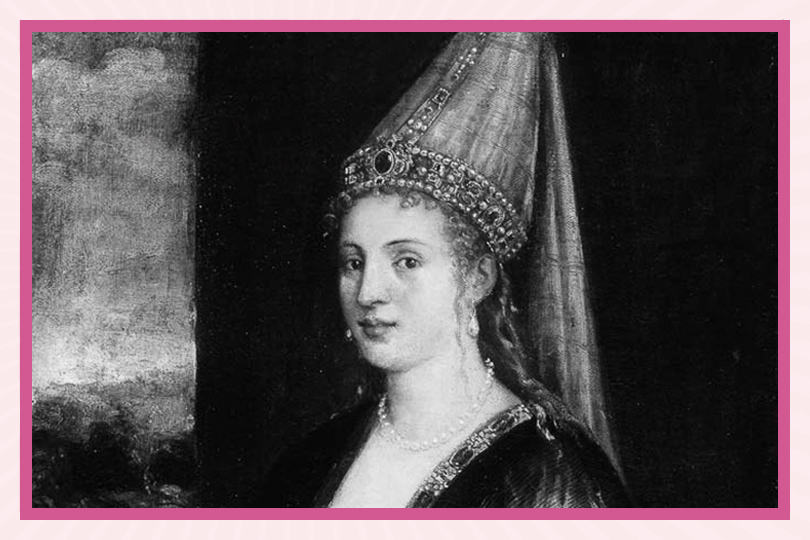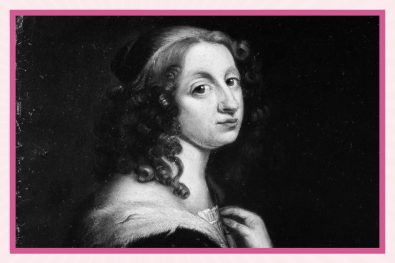In the early sixteenth-century, a young girl from modern-day Ukraine was ripped away from her home and sold into slavery. Fast forward a couple decades and she wielded unprecedented power in Istanbul as the Sultan’s wife and mother of his heirs. How did this young woman find herself in the bed of Süleyman the Magnificent, and in the centre of politics? Without further ado, here is a look at the life and legacy of Roxelana, one of the most powerful women in the history of the Ottoman Empire.
The Early Years
The woman known to us as Roxelana was born sometime between 1505 and 1510. Her birth name is lost to history; it’s believed that the moniker Roxelana originated in reference to her possible Ruthenian roots. She is also known by her Ottoman name, Hurrem, which roughly means “the joyful one.”
Her biographer, Dr Leslie Peirce, a professor of Ottoman history, writes in Empress of the East: How A European Slave Girl Became Queen of the Ottoman Empire that Roxelana’s birthplace is uncertain, but that it is widely believed that she was born in Ruthenia, in “old Russia,” today a broad region in the Ukraine, then governed by the Polish King.
According to Peirce, she was abducted from her homeland at around 13 years old by Tatar raiders and taken to the slave markets in Istanbul, the heart of the Ottoman Empire. From there, she was purchased by someone with a connection to Süleyman, the future Sultan—some sources say it was his mother, others an advisor.
Beyond that, we don’t know much about her origins. And while there are several portraits out there credited to Roxelena, it’s not actually certain whether any of these are accurate depictions of her.
From Slave to Sultana
By 1520, Süleyman became the Sultan of the Ottoman Empire, and soon after, Roxelana found herself as the newest member of his harem. He was 27, and she was about 17 years old.
It was, apparently, common practice for Sultans to father children from Christian-born women who converted to Islam. Peirce explains that this gave them the advantage of “having no ties to Ottoman families who might challenge the dynasty’s importance.”
Once Roxelana joined Süleyman’s household as a concubine, she learned Turkish, was given instruction in the religion of Islam, and was taught the “amorous arts.” Right away, she caught Süleyman’s eye and quickly became his favourite. He appreciated her “joyful temperament” and musical skills.
He started neglecting the other women in his harem in favour of her. Soon, Roxelana was his chief consort. Defying the tradition that once a concubine provided a son they be sent away, he continued to focus all his attentions on her. By 1532, she had given him six children.
Süleyman further shocked everyone by legally marrying Roxelana in 1536, effectively making her a “free woman.” Peirce notes that she was the “first Ottoman concubine ever to marry the sultan who was her master.” There was technically no position of “Queen” in the Ottoman Empire, but Roxelana came as close to being a Queen in the way that we would understand it.
A contemporary in Istanbul wrote that: “This week there has occurred in this city a most extraordinary event, one absolutely unprecedented in the history of the Sultans. The Grand Signior Suleiman has taken to himself as his Empress a slave woman from Russia…There is great talk about the marriage and none can say what it means.”
Süleyman and Roxelana formed what we would refer to as a nuclear family in a time when polygamy was the common practice, and it is widely believed that theirs was a love match.
Roxelana went on to have great influence in politics due to the power that she wielded over her husband. Peirce writes that some thought she seduced him with the use of potions. She was even accused of witchcraft by her enemies, since this was the only explanation that they could think of for her success.
While her husband was on military campaigns, she remained his key correspondent. She took an interest in international relations and acted as the hostess to visiting foreign women, and she fostered relationships with other queens and noblewomen.
Roxelana also worked tirelessly in advocating for causes that she believed in and used her position of influence to patronize various projects in the city. She founded buildings such as a mosque, a hotel for pilgrims to Mecca and Medina, and a hospital. She also endowed soup kitchens, shrines for saintly figures, and public baths.
Later Years and Legacy
According to Peirce, Roxelana transformed the harem during her lifetime. It went from “a residence for women of the dynasty” to “an institution that wielded political influence.” One way that she did this was relocating the harem from its previous location off-site to the palace where the Sultan lived and held court.
Roxelana is credited as “beginning what is known in Ottoman history as the Sultanate of women, a period during which the women of the royal family exerted greater influence and power over political affairs that previously or since.” After her, royal women in the Ottoman Empire serves as advisors to their sons and ruled as regents.
Roxelana died in April 1558, and after her husband’s death in 1566, her last surviving son succeeded in power as Selim II.
Her fame spread and her story became a thing of fascination in the West. Richard Knolles, who published the first major history of the Ottoman Empire in English in 1603, wrote that “this woman, of late a slave” had “become the greatest empresse of the East, flowing in all worldly felicitie, attended upon with all the pleasures that her heart could desire.”
Sometimes, her story was exaggerated and her reputation made out to be scandalous, and she was used to fuel a fear of powerful women and to make the Ottoman Empire seem more “Other,” or foreign. She was written about in pamphlets, plays, and musical works, and depicted in art, often criticized for her ambition. Recently, was made famous again by a Turkish historical TV show that was translated into dozens of languages and broadcast around the world called the Magnificent Century.
As Peirce observes, “that Roxelana was and remains an object of such fascination is a testament to her extraordinary life.”











